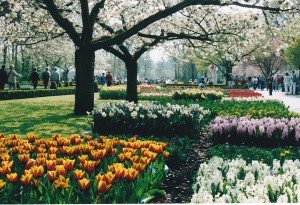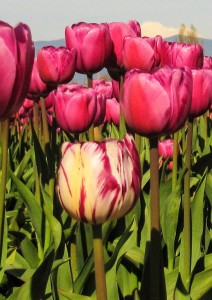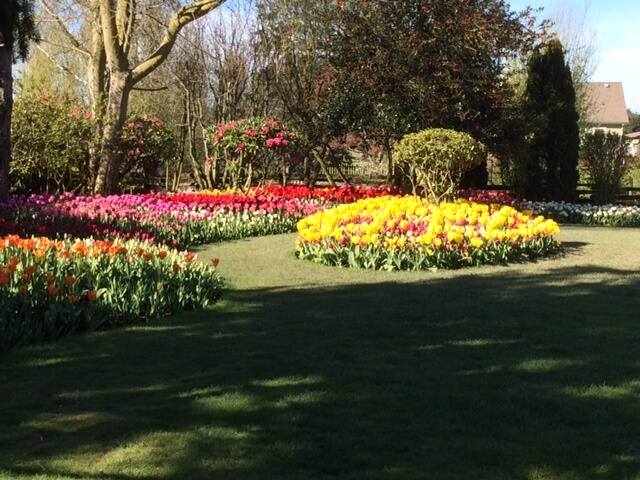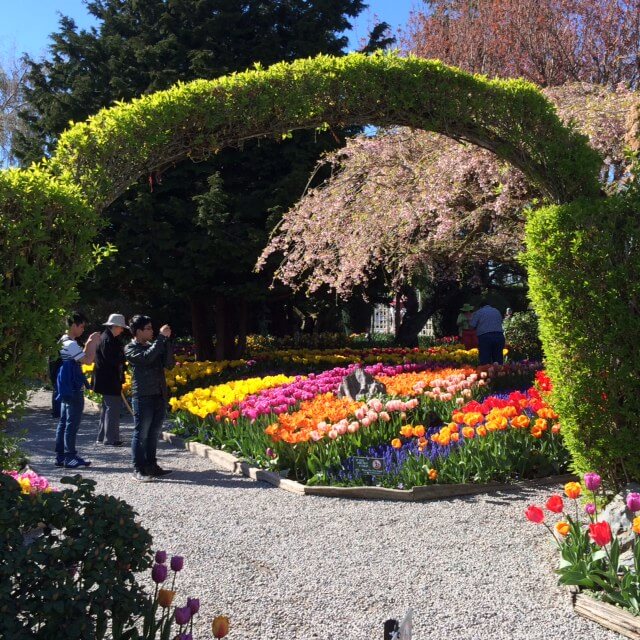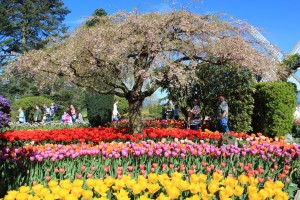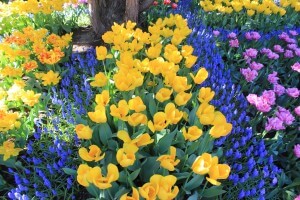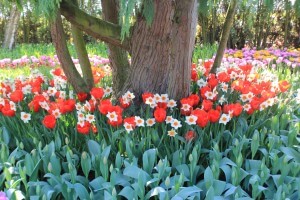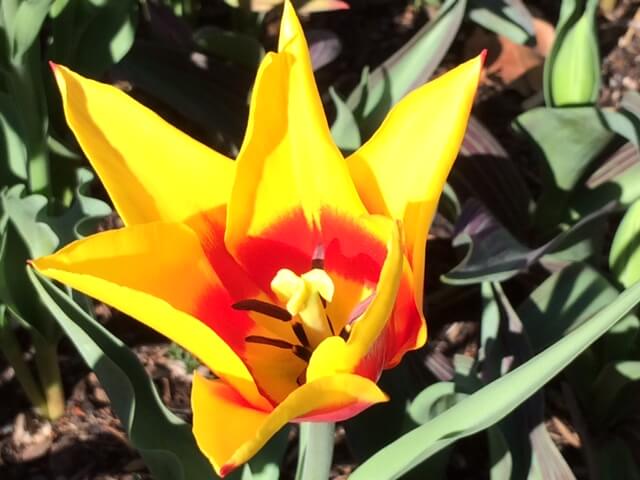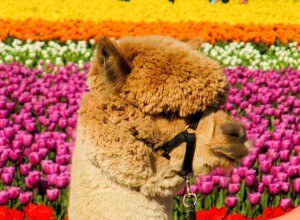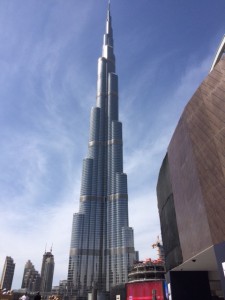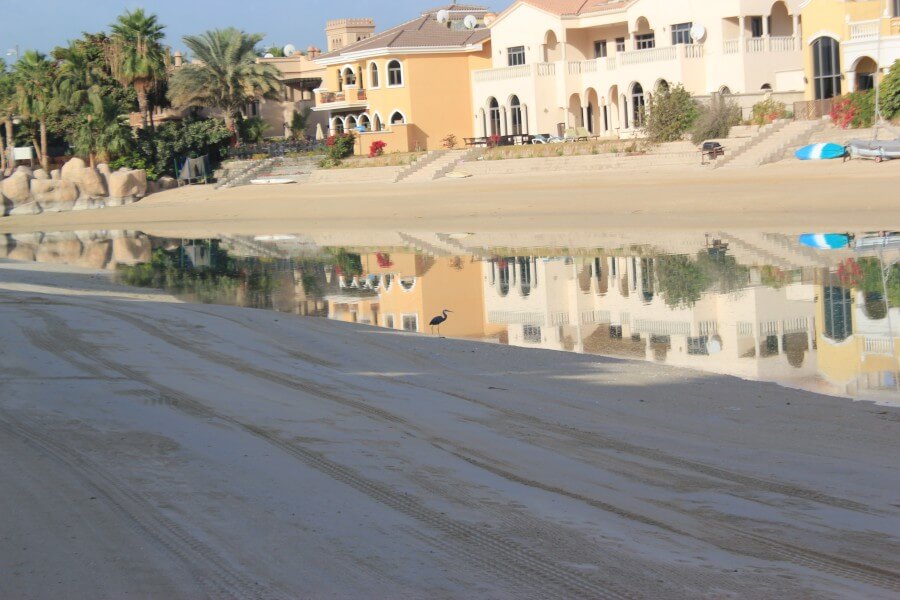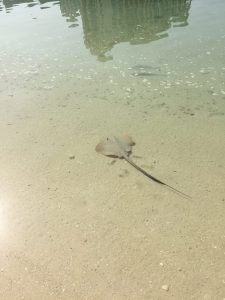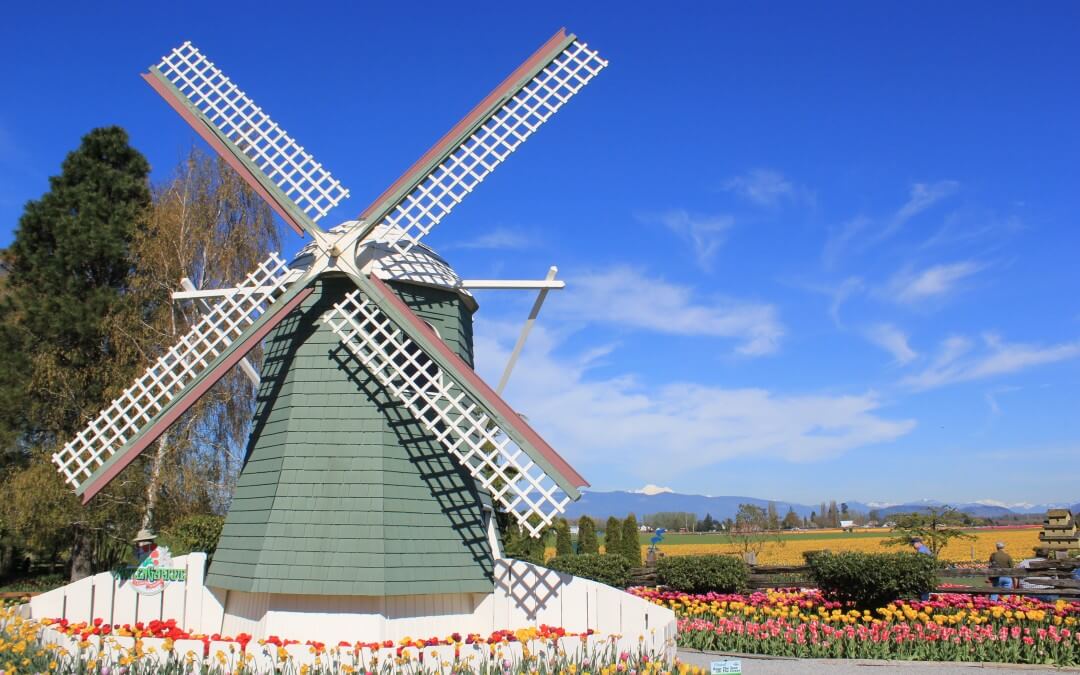
From Turbans to Tulips, Hope’s Perennial Spring
As March goes out like a lamb, vivid colors burst forth from nature’s most gorgeous harbinger of spring. There’s nothing more joyful than strolling through a tulip garden on a warm, sunny day.
Dutch Tulip Time
When I lived in Europe, I enjoyed the Tulip Festival in The Netherlands. Keukenhof (above) offers 70 acres of stunning arrangements, where the vibrant beauty of the tulips make you happy just to be alive.
American Tulip Time
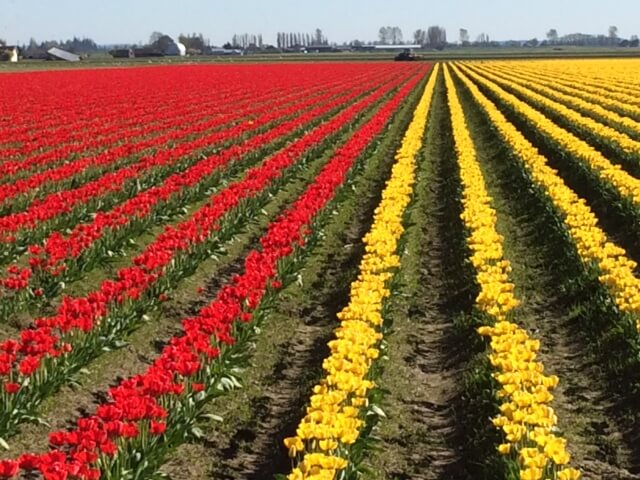 So imagine my surprise and delight when I moved to the Pacific Northwest and found America’s largest tulip and daffodil grower in the fertile Skagit Valley, not far from my home. Skagit County offers 300 acres of tulips.
So imagine my surprise and delight when I moved to the Pacific Northwest and found America’s largest tulip and daffodil grower in the fertile Skagit Valley, not far from my home. Skagit County offers 300 acres of tulips.
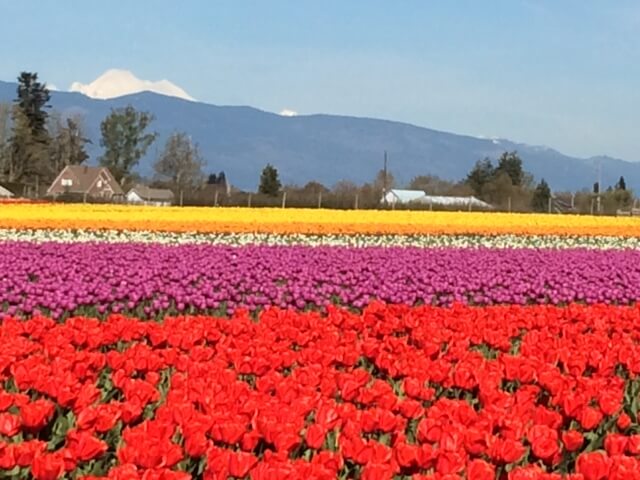 I’m not sure if Skagit is the largest tulip-growing area in the country, but I do know that none of the other top ten tulip festivals unfold beneath snow-capped mountains.
I’m not sure if Skagit is the largest tulip-growing area in the country, but I do know that none of the other top ten tulip festivals unfold beneath snow-capped mountains.
I love how Mt. Baker peeks over the Skagit Valley.
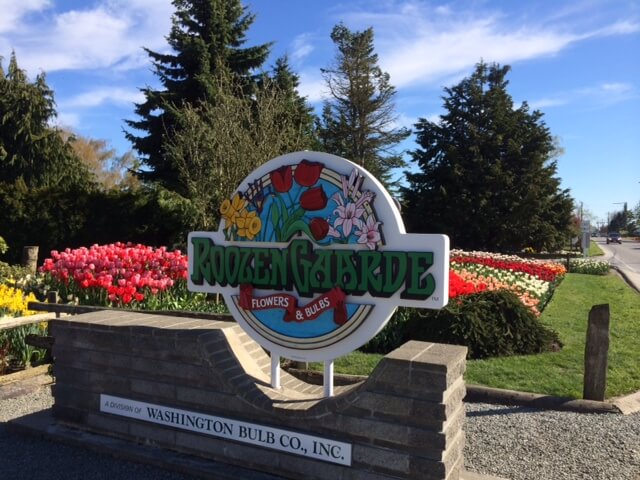 The open fields of color are stunning enough, but then Tulip Town and RoozenGaarde top that with beautifully designed gardens.
The open fields of color are stunning enough, but then Tulip Town and RoozenGaarde top that with beautifully designed gardens.
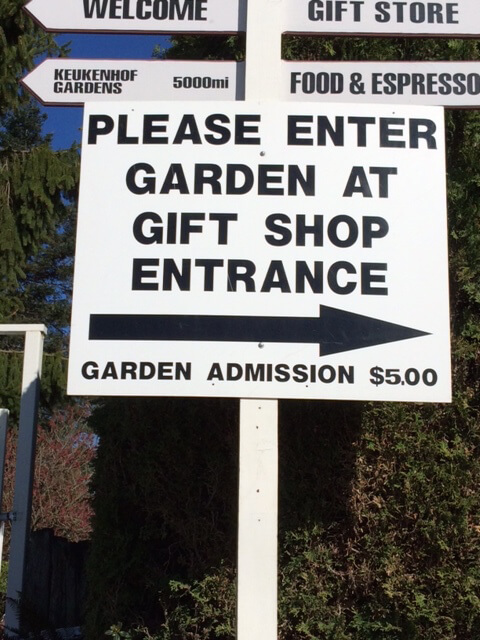 Not only is RoozenGaarde admission a good deal at $5, but they are also kind enough to show you how far you’d have to travel to see the The Netherlands’ festival at Keukenhof.
Not only is RoozenGaarde admission a good deal at $5, but they are also kind enough to show you how far you’d have to travel to see the The Netherlands’ festival at Keukenhof.
Tulpenwoede (Tulipmania), The Dark History
Keukenhof’s 2016 theme is “The Golden Age,” reminding nature lovers of the tulip’s fascinating history, the time of celebration when the tulip was introduced to Western Europe. First seen in Istanbul, the name tulip evolved from a Turkish word for turban.
An ambassador to Turkey took some bulbs to his botanist friend, Clusius, who was studying bulbous plants in Vienna. He loved the tulip so much that in 1592 he took bulbs home to Holland and created the first non-medical garden, much to the envy of his neighbors.
The 2016 theme is also a reminder of the great tulip crash of 1637. The Dutch became so crazy about tulips that the small number of growers could sell them for exorbitant prices. This tempted neighboring farmers to steal the bulbs. Then speculators got involved and drove the prices to ridiculous levels.
Trade got riskier when the non-deadly mosaic virus caused streaks to appear on the blooms, making certain tulips even rarer and more expensive.
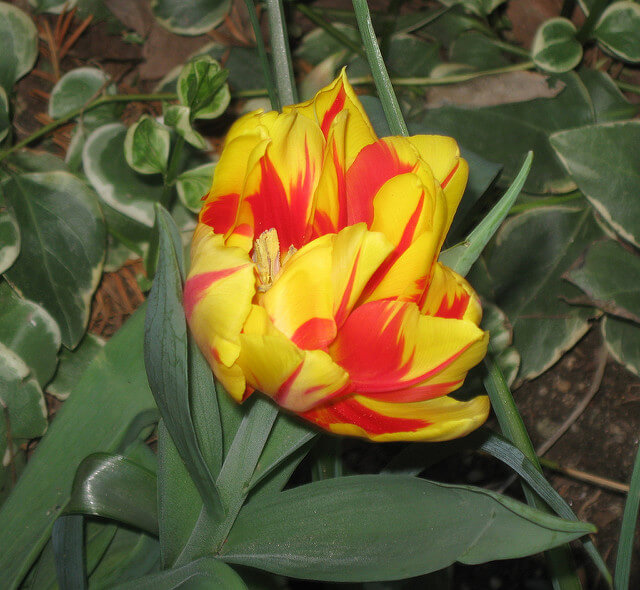
Rembrandt yellow red tulip by Ed
Today these “flamed” tulips (cousins of the original but without the mosaic virus) are called Rembrandts.
In the mid 1630s buyers speculated on tulips to the point of risking their homes or their land. When the price peaked, rapid sales caused a panic. This brought a market crash in 1637 and then a nationwide depression.
Still today, the Dutch are the number one tulip growers, providing 93 percent of the world’s supply. They also export expertise. The Roozen family, who immigrated to Skagit County in 1947, were descendants of Dutch tulip farmers going back to the 1700s.
Skagit Valley Tulip Festival
To get the best photos at RoozenGaarde, we went to Skagit County before the Tulip Festival opened on April 1. The Festival is probably fun, with craft stalls, food, music, quilts, and wine tasting. But I just wanted to bask in the sun and take memorable photos of thousands of tulips sans thousands of people.
Not that going pre-festival means empty gardens.
Sometimes the photographer waits and waits, but people just don’t notice.
But you still have a chance of getting some beautiful, unpeopled shots.
And you might make some friends you never anticipated, like this cute alpaca.
As we drove through the rest of Skagit County—on the way to The Snow Goose market for ice cream—we felt saddened by the fields of withering daffodils. Then we remembered that spring is a time of rebirth. As with the tulips, the growers will clip off the daffodil blooms to let the stems feed the bulbs and then harvest them in summer to bloom next year. Ah, I feel so much better.
The Urgency
That’s obvious. The tulips and festivals are time-sensitive. Skagit Valley lasts through the month of April. The Holland, Michigan Festival is only in May, and Keukenhof, the mother of all festivals, extends from late March to mid-May. The clock is ticking.
Feature photo, “Dutch Treat” from Perry Adair
More photos on Facebook at NancyAdairWriter
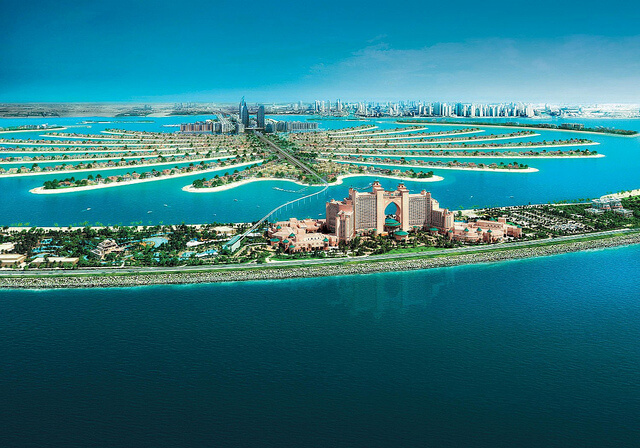
Dubai’s Amazing Engineering: How Water Comes to the Desert
Dubai Grows UP
Blogging 101 says always take horizontal photos. That’s not easy to do when writing about Dubai.
Carved out of a Bedouin desert outpost, Dubai can’t spread out much more, so it is growing up—and down. When I first visited ten years ago, the Burj Khalifa was only twenty stories high. Now finished, it reaches to 148 stories. You may remember the last Mission Impossible, with Tom Cruise dangling out of a window one-half mile up from the ground. Everything is spectacular in Dubai.
Over the years I’ve watched so many futuristic skyscrapers rise to the sky, to the point where I feel shorter and shorter with each visit, like a minnow navigating the monoliths of Halong Bay.
You may think minnow is an unlikely metaphor in a story about the desert, but it’s not. Dubai’s creative construction engineers now focus on bringing more water features into the desert.
Dubai Water Features
The famous dancing fountains below the Burj Khalifa and The Address (covered in tarp while undergoing repairs from the giant New Year’s Eve fire–everything is spectacular in Dubai), represent a modest water feature when compared with the plans for new developments.
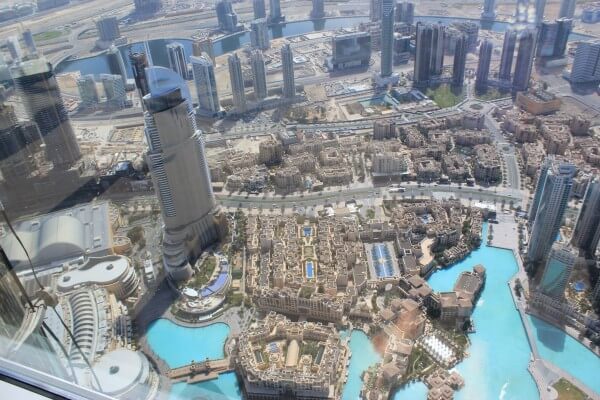 The fountains, dancing in this pool during the evening, rival those at the Bellagio. My favorite is the Middle Eastern theme, where the spouts of water seem to be belly dancing.
The fountains, dancing in this pool during the evening, rival those at the Bellagio. My favorite is the Middle Eastern theme, where the spouts of water seem to be belly dancing.
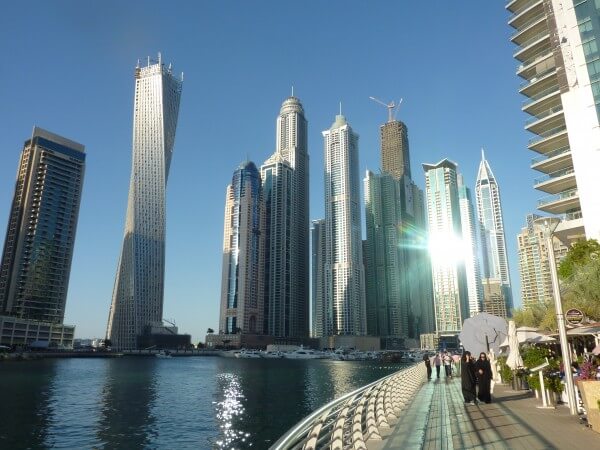 Places like The Marina, an artificial canal city built in 2003, show the new direction in water features. Late one afternoon we walked an area of about three blocks square, saw shops, restaurants, hotels, and condos, and then stopped for tea at a waterfront cafe.
Places like The Marina, an artificial canal city built in 2003, show the new direction in water features. Late one afternoon we walked an area of about three blocks square, saw shops, restaurants, hotels, and condos, and then stopped for tea at a waterfront cafe.
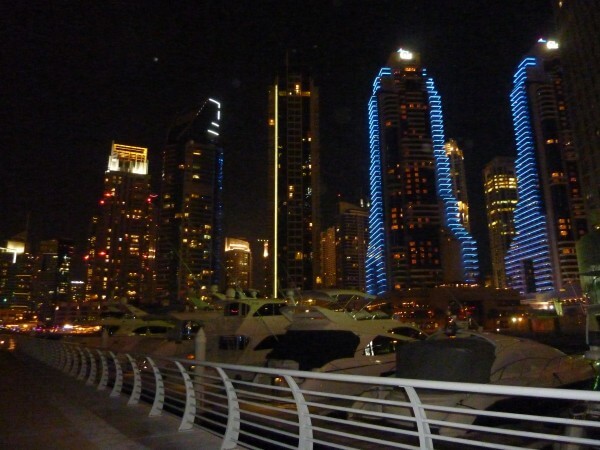 The Marina is a beautiful place for a stroll, day or night.
The Marina is a beautiful place for a stroll, day or night.
But after one day among the skyscrapers, I’d walked enough. Tall buildings look close, but it’s an optical illusion that has you walking much farther than you had planned.
The Palm Jumeirah, Rising from the Gulf
So I took refuge with my friends in a place that has grown down. The Palm Jumeirah is a palm-tree-shaped island on reclaimed land. Homes went on sale in 2006 and sold out immediately because they’re all on the water.
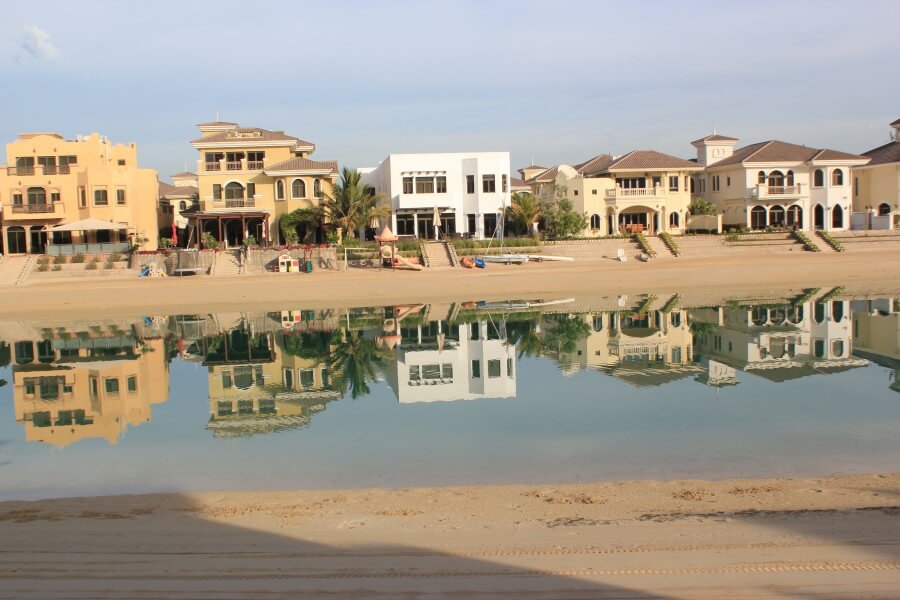
I appreciated the quiet beauty of their neighborhood, with water flowing in from the Persian Gulf separating each frond. You cannot hear the traffic out on the “stem,” running up the middle of the palm tree, and no motorized watercraft are allowed to enter the frond area.
Early morning walks are so pleasant. You find herons, shells, jumping fish, and sometimes rays in the middle.
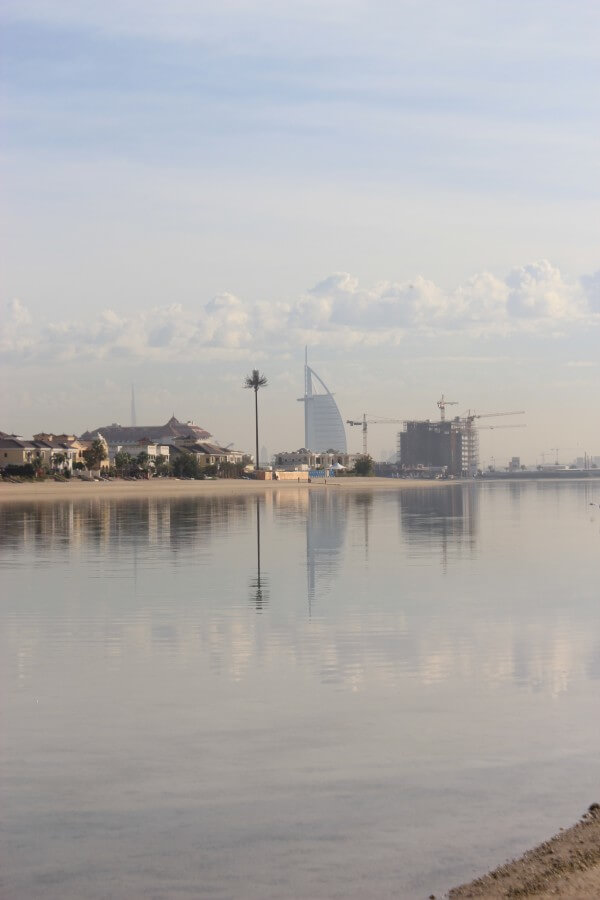 The first morning was hazy, but I could still enjoy the view of the sail-shaped Burj al-Arab and the monstrous Burj Khalifa in the distance. The tall pole in the foreground is the creative approach to a telecommunications tower. And like every other scene in Dubai, the construction crane is ever-present.
The first morning was hazy, but I could still enjoy the view of the sail-shaped Burj al-Arab and the monstrous Burj Khalifa in the distance. The tall pole in the foreground is the creative approach to a telecommunications tower. And like every other scene in Dubai, the construction crane is ever-present.
Dubai Grows Down: Building The Palm Jumeirah
While environmentalists still scream about the reclamation projects, the government (Coastal Monitoring Program) has responded to their concerns and found some solutions to their complaints. The monitors believe that the quality of the coastline environment is returning. Environmentalists also claim the island has sunk half an inch. My friends see no evidence of that. Their house has not settled, there are no cracks anywhere, and the underground pipes and conduits work just fine.
The Palm was initially conceived as a grand endeavor to draw tourists and tourist dollars when the oil supply runs dry (rumored to be this year). Consistent with everything else in the Emirates, the Palm Jumeirah had to be a wonder of the world. In this case, it is the world’s largest artificial island.
At first, The Palm was to be a circle, but then, who would want to live in the middle? So the Crown Prince of Dubai came up with the palm tree shape to increase the available beachfront. Genius. Along the stem of the palm tree, are hotels and condo buildings, and on each of the 16 palm fronds are single-family homes.
In 2001, dredgers began depositing sand and rock, sprayed out from the ship in what looked like a rainbow, guided by satellite GPS. The technique uses vibro-compaction, compacting soil and loose sand with vibrations and water saturation.
To protect the island from the waves and tides, a crescent-shaped barrier was built of large rocks and earth. The builders say that divers worked underwater to guide the placement of each rock.
The stem of The Palm leads to the crescent via an undersea tunnel. When you come up, you are at The Atlantis, another wonder in itself.
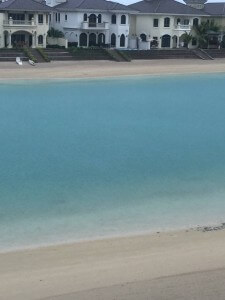 Earlier this year—just after we left—severe storms hit the Gulf Region, flooding many parts of Dubai and killing several people. The Palm, however, weathered the storm with only some rising water. If you compare this beach with those in other photos, you can see the difference. The engineers must have known what they were doing.
Earlier this year—just after we left—severe storms hit the Gulf Region, flooding many parts of Dubai and killing several people. The Palm, however, weathered the storm with only some rising water. If you compare this beach with those in other photos, you can see the difference. The engineers must have known what they were doing.
The Urgency
How long can this level of development be sustained? Was The Address fire a warning or a one-off? Who knows. I’m just glad I’ve taken the opportunity to witness this wonder of the world over the past ten years. It’s truly amazing right now.
For more photos from Dubai, click on the facebook link below.
Coming up: The Tulip Festival; Dubai Tennis Open
Feature Photo from Werner Bayer, “atlantis-the-palm 1” from Flickr/Creative Commons
Marina photos from Jan Harris
The rain storm Palm photo from Terry El Sakka
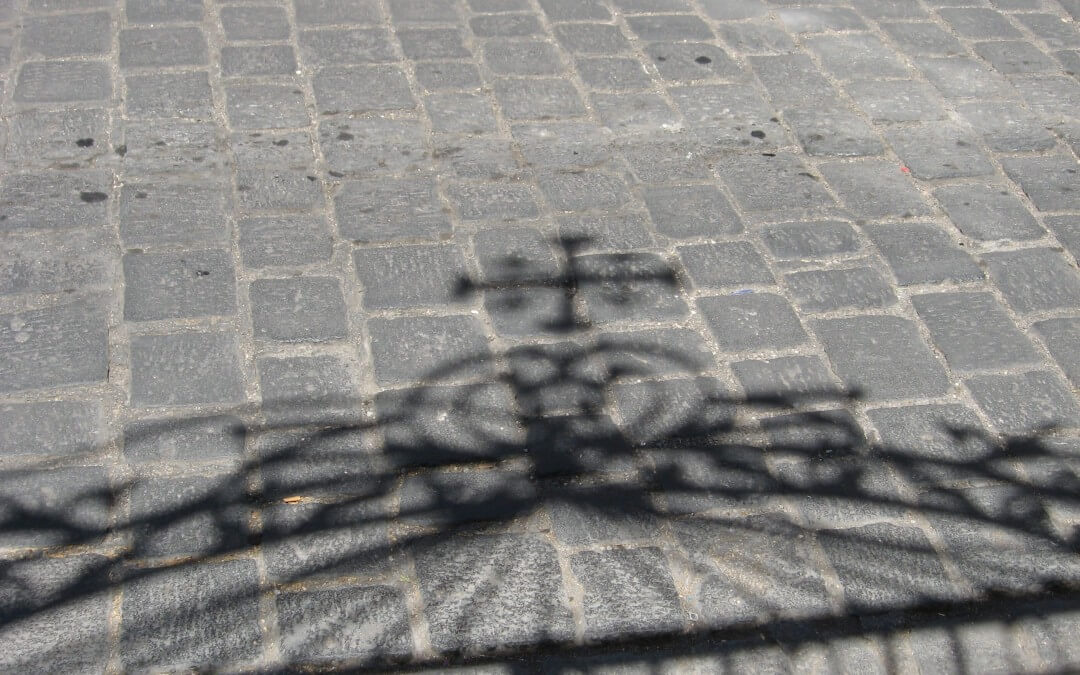
What Harmony Looked Like: Good Friday in Damascus
The attacks in Belgium have stunned us all. The news accuses terrorists trained in Syria. While you are trying to sort out your emotions, keep in mind that neither the terrorists nor their handlers are Syrian and that Syrians are suffering, too.
A few years before the civil war, I spent Good Friday in the once peaceful city of Damascus, Syria. Like Jerusalem, Old Town Damascus has different quarters for different cultures. And Friday, especially Good Friday, is an important day for all.
Souq Al-Hamidiyya
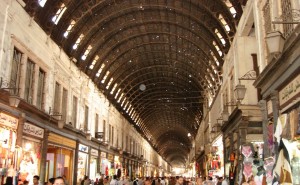 My day started at the Souq, where, on Fridays, shops open after Friday prayers. My favorite part about visiting this ancient market is chatting with the shopkeepers, who speak good English and love to talk politics. If you have the courage to hear an interesting take on the U.S., you’ll get it in Old Damascus.
My day started at the Souq, where, on Fridays, shops open after Friday prayers. My favorite part about visiting this ancient market is chatting with the shopkeepers, who speak good English and love to talk politics. If you have the courage to hear an interesting take on the U.S., you’ll get it in Old Damascus.
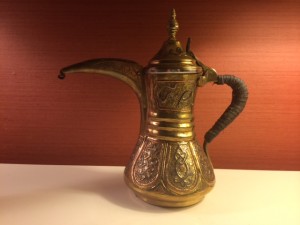 I bought this beautiful coffee pot. Though the shape is typically Arabic, the Damascene style is a design of Jewish artisans, famous for copper and silver metallurgy and for designing this inlay of wavy patterns.
I bought this beautiful coffee pot. Though the shape is typically Arabic, the Damascene style is a design of Jewish artisans, famous for copper and silver metallurgy and for designing this inlay of wavy patterns.
The shopkeeper was a Muslim, who admired Jewish craftsmanship. He had collected as many pieces as he could as the last group of Jews prepared to flee in 1994. He gave us a history lesson about the Jews, who had lived in Syria since the time of King David and about those who arrived in droves from Spain in 1492.
I was surprised that he knew about King David, but he said Muslims do know The Old Testament. Something the three cultures of Damascus all have in common.
The Jewish Quarter
While there had been great tension in the 90‘s, the new millennium brought cooler attitudes, and the Grand Mufti of Syria called for the Jews to return to their historic homes in the Jewish Quarter, Harat al-Yahoud. Their properties had been safeguarded since the mass emigration. (It’s good they didn’t come back. Two years ago, when the civil war became an insurgency, terrorists attacked the historic Jobar Synagogue and demolished it.)
The Christian Quarter
On the evening of Good Friday, we went to the Christian Quarter, where, much to my surprise, we found long lines of devout worshippers waiting to get into the chapels for Good Friday mass. Without fear of retribution, they waited at the two chapels of the Mariamite Cathedral, an ancient Greek Orthodox Church compound dedicated to Mary, and at the Maronite Cathedral, founded by a branch of Christians, who trace their roots back to 4th Century Lebanon.
The longest line was at the small underground House of St. Ananias, now a chapel. We squeezed down the steps and into the crowd to learn the story of Ananias. He converted a persecutor of Christians named Saul into a Christian apostle, named Paul, who transitioned from a blind man to a seer.
While I lived in the Middle East, Syrians were hopeful and supported a peaceful co-existence among all cultures. I always felt safe there. They welcomed foreigners, thinking tourism was their key to prosperity, and they knew that diversity and the preservation of the Jewish and Christian Quarter was the ticket.
The Urgency
People throughout the world share basic needs. They want to stay in their homes, ply their trades, practice their traditions, and have hope for a brighter future. At one time, not so long ago, three cultures in Damascus did this in harmony. Now invaders have made that life all but impossible. Pity the Belgians. Pity the injured and lost. But pity the Syrians of divergent cultures, too, for all have suffered.
For more photos of Syria, click on the Facebook link.
New week: Dubai: Life on the Palm
Feature photo from Monica Adair

